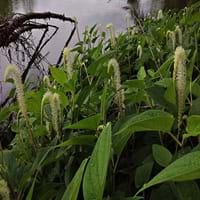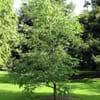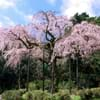Life Span
Perennial
Perennial
Type
Flowering Plants
Aquatics
Origin
Mediterranean, North Africa, Northern America
Northeastern United States, Mid-Atlantic United States, Southeastern United States, North-Central United States, Central United States, South-Central United States, Canada
Types
Anthony Peak Lupine, Silver Bush, Garden Lupine, Spider Lupine, Adonis Lupine
Not Available
Number of Varieties
Not Available
Habitat
Pine barrens, Sandy areas
Moist Soils, Terrestrial, Upland, Wet lands
USDA Hardiness Zone
3-7
3-11
Sunset Zone
1a, 1b, 2a, 2b, 3a, 3b, 4, 5, 6, 7, 14, 15, 16, 17
21,22
Habit
Upright/Erect
Thicket/Colonizing
Flower Color
Blue, Pink, White
White
Flower Color Modifier
Not Available
Not Available
Fruit Color
Not Available
Brownish Red
Leaf Color in Spring
Light Green
Green, Dark Green
Leaf Color in Summer
Green
Green, Dark Green
Leaf Color in Fall
Green
Green, Dark Green
Leaf Color in Winter
Not Available
Not Available
Leaf Shape
Oblovate
Heart-shaped
Plant Season
Summer
Spring, Summer, Fall
Sunlight
Full Sun, Part sun
Full Sun, Partial Sun, Partial shade
Type of Soil
Loose, Moist
Loam
The pH of Soil
Slightly Acidic
Acidic, Neutral
Soil Drainage
Well drained
Average
Bloom Time
Late Spring, Summer
Summer
Tolerances
Not Available
Wet Site
Where to Plant?
Ground
Container, Ground, Pot
How to Plant?
Seedlings
From Rhizomes, Root Division
Plant Maintenance
Medium
Medium
Watering Requirements
Form a Soil ring to water efficiently, Keep the ground moist but not water-logged, Requires a lot of watering, Water in morning to avoid prompting diseases
Needs Very high moisture
In Summer
Lots of watering
Lots of watering
In Spring
Moderate
Moderate
In Winter
Average Water
Average Water
Soil pH
Slightly Acidic
Acidic, Neutral
Soil Type
Loose, Moist
Loam
Soil Drainage Capacity
Well drained
Average
Sun Exposure
Full Sun, Part sun
Full Sun, Partial Sun, Partial shade
Pruning
Prune ocassionally
Remove damaged leaves, Remove dead branches, Remove dead leaves
Fertilizers
All-Purpose Liquid Fertilizer
All-Purpose Liquid Fertilizer
Pests and Diseases
Aphids, Fusarium wilt, Root rot, Thripes
bees
Plant Tolerance
Drought
Drought
Flower Petal Number
Single
Single
Foliage Texture
Medium
Medium
Foliage Sheen
Matte
Matte
Attracts
Bees
Bees, Flies
Allergy
Abdominal pain, Asthma, Nausea, Swelling in the face, Vomiting
allergic reaction, Pollen
Aesthetic Uses
Showy Purposes
Bog Garden, Showy Purposes, Water gardening, Wild gardens
Beauty Benefits
Not Available
Not Available
Environmental Uses
Air purification
Air purification
Medicinal Uses
Anthelmintic, Diuretic, Treatment of ulcers
Insect Bites, Treating fever
Part of Plant Used
Flowers, Seeds
Flowers, Leaves, Root
Other Uses
Showy Purposes, Used as Ornamental plant, Used for fragrance
Grown in botanical gardens as a specimen, Used as Ornamental plant
Used As Indoor Plant
No
Sometimes
Used As Outdoor Plant
Yes
Yes
Garden Design
Bedding Plant, Container, Feature Plant, Foundation, Rock Garden
Container, Water Gardens, Wildflower
Botanical Name
Lupinus
SAURURUS cernuus
Common Name
Hybrid Lupine
Lizard's Tail
In Hindi
वृक संयंत्र
Saururus cernuus
In German
lupine
Saururus cernuus
In French
usine de lupin
Saururus cernuus
In Spanish
planta de lupino
cernuus Saururus
In Greek
φυτό λούπινο
Saururus cernuus
In Portuguese
tremoço planta
Saururus cernuus
In Polish
łubin roślin
Saururus cernuus
In Latin
Plinio herba
Saururi cernuus
Phylum
Magnoliophyta
Tracheophyta
Class
Magnoliopsida
Magnoliopsida
Family
Fabaceae
Saururaceae
Clade
Not Available
Angiosperms, Magnoliids
Tribe
Not Available
Not Available
Subfamily
Faboideae
Not Available
Number of Species
Not Available
Importance of Lupine and Saururus cernuus
Want to have the most appropriate plant for your garden? You might want to know the importance of Lupine and Saururus cernuus. Basically, these two plants vary in many aspects. Compare Lupine and Saururus cernuus as they differ in many characteristics such as their life, care, benefits, facts, etc. Every gardener must at least have the slightest clue about the plants he wants to plant in his garden. Compare their benefits, which differ in many ways like facts and uses. The medicinal use of Lupine is Anthelmintic, Diuretic and Treatment of ulcers whereas of Saururus cernuus is Insect Bites and Treating fever. Lupine has beauty benefits as follows: Not Available while Saururus cernuus has beauty benefits as follows: Not Available.
Compare Facts of Lupine vs Saururus cernuus
How to choose the best garden plant for your garden depending upon its facts? Here garden plant comparison will help you to solve this query. Compare the facts of Lupine vs Saururus cernuus and know which one to choose. As garden plants have benefits and other uses, allergy is also a major drawback of plants for some people. Allergic reactions of Lupine are Abdominal pain, Asthma, Nausea, Swelling in the face and Vomiting whereas of Saururus cernuus have allergic reaction and Pollen respectively. Having a fruit bearing plant in your garden can be a plus point of your garden. Lupine has no showy fruits and Saururus cernuus has no showy fruits. Also Lupine is flowering and Saururus cernuus is not flowering . You can compare Lupine and Saururus cernuus facts and facts of other plants too.





